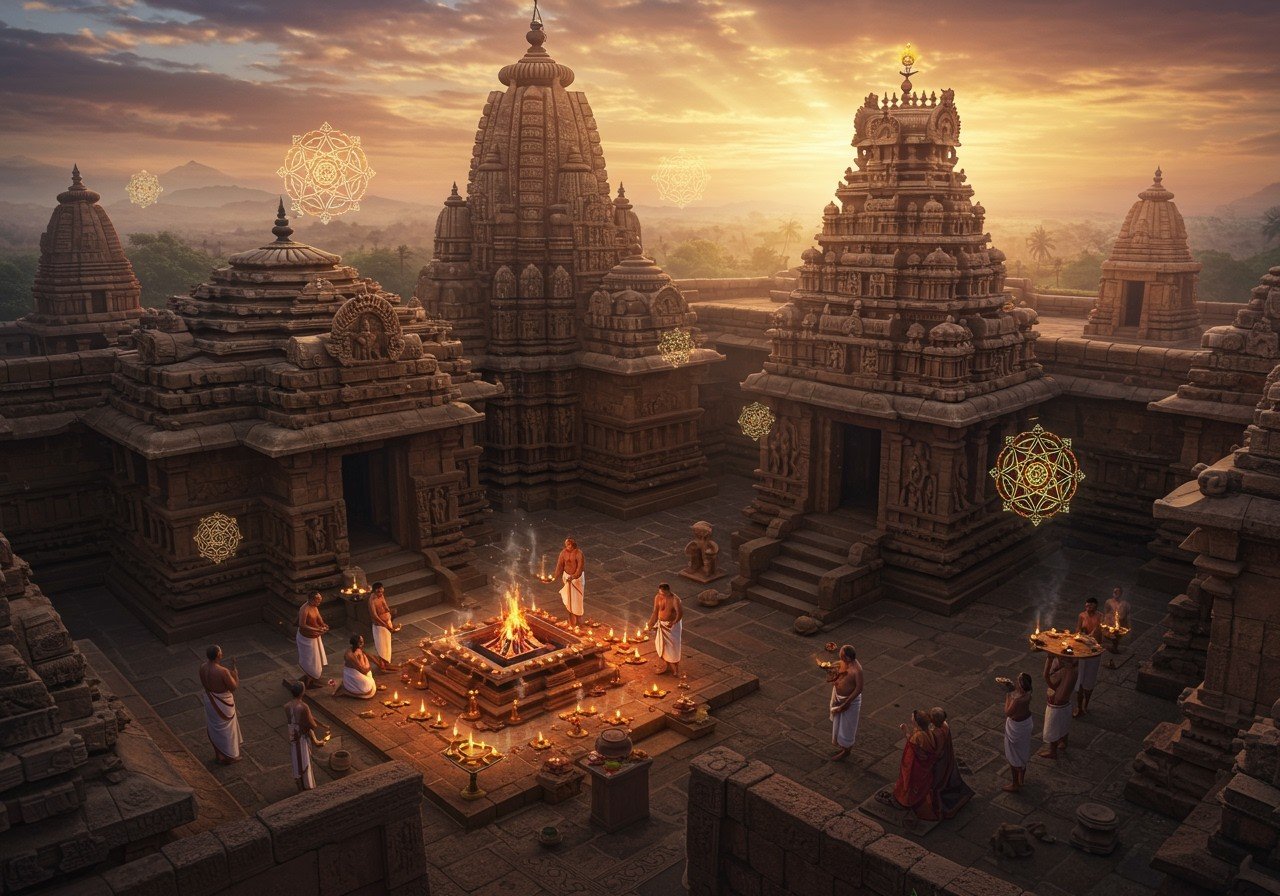
The Western Chalukya dynasty, also known as the Later Chalukyas or Kalyani Chalukyas, left an indelible mark on South India during their reign from the 10th to the 12th centuries. This era witnessed remarkable advancements in temple architecture, a flourishing of religious rituals, and a profound influence of Hinduism on societal norms. This exploration delves into the spiritual world of the Western Chalukyas, examining their temples, rituals, and beliefs, offering a glimpse into a civilization that seamlessly integrated spirituality with daily life.
Western Chalukya Temples
The Western Chalukya period is celebrated for its distinctive temple architecture, representing a transition from the early Chalukya style to the later Vijayanagara style. Located primarily in present-day Karnataka, these temples, constructed between the 10th and 12th centuries CE, are dedicated to various Hindu deities, including Durga, Shiva, and Vishnu. The temples are renowned for their intricate carvings, star-shaped sanctums, and elaborate mantapas (halls). The architecture often features a blend of cave and structured designs, adorned with decorative pillars and unique floor plans.
Notable examples of Western Chalukya temples include:
- Bhutanatha Temple in Badami: This temple complex, situated by the Agastya Lake, is dedicated to Lord Shiva. It showcases a blend of Dravidian and Nagara architectural styles.
- Mallikarjuna Group of Temples in Badami: These rock-cut cave temples, carved out of sandstone cliffs, are dedicated to Shiva, Vishnu, and other deities. They are known for their intricate sculptures and carvings.
- Yellamma Temple in Badami: Dedicated to the goddess Yellamma, this temple is known for its unique architectural features and its importance in local traditions.
- Amrtesvara Temple in Annigeri: This ornate temple, built in 1050 CE, stands as a testament to the architectural prowess of the Western Chalukyas, featuring intricate carvings and a stepped diamond plan.
- Brahma Jinalaya in Lakkundi: Though named after Brahma, this temple is dedicated to Lord Shiva. It showcases the Chalukyan architectural style with its well-proportioned structure and ornate details.
- Kasivisvesvara Temple in Lakkundi: This temple, built in the 11th century CE, is known for its stunning architecture and intricate carvings. It stands as one of the finest examples of Western Chalukya architecture.
These temples served not just as places of worship but also as hubs for cultural and social activities, reflecting the dynasty’s deep devotion to Hindu deities.
Religious Practices During the Western Chalukya Period
The religious practices of the Western Chalukyas were firmly grounded in Vedic traditions and Puranic texts. Daily rituals were an integral part of life, and major festivals were celebrated with great fervor.
Daily rituals included:
- Naivedya: Offering food to the deities, a practice that symbolized sharing a meal with the divine.
- Flower and Incense Offerings: Flowers and incense, representing purity and devotion, were offered to the deities.
- Mantra and Hymn Chanting: Chanting sacred mantras and hymns was believed to invoke the blessings of the deities and create a sacred atmosphere.
Major festivals such as Maha Shivaratri and Vaikuntha Ekadashi were celebrated with immense enthusiasm, featuring processions, music, and dance. Temple priests and patrons played vital roles in maintaining religious sanctity and conducting rituals.
Influence of Hinduism on Western Chalukya Society
Hinduism profoundly shaped societal norms and values during the Western Chalukya period. The caste system influenced social hierarchy and occupational roles. Temples served as educational centers where subjects like grammar, logic, and philosophy were taught.
The Chalukya kings generously supported arts and literature, especially Kannada and Sanskrit scholars, demonstrating their commitment to preserving religious knowledge. This patronage fostered a vibrant intellectual and artistic climate, contributing to the rich cultural tapestry of the era.
Architectural Innovations and Symbolism
Western Chalukya architects introduced significant innovations in temple construction.
- Stepped Diamond Plan: This innovative floor plan created a visually striking and unique temple layout.
- Lathe-Turned Pillars: These intricately carved pillars added to the aesthetic beauty and structural integrity of the temples.
The symbolism embedded in temple architecture aimed to create a microcosm of the universe, aligning human existence with the divine order. Iconography depicting deities in various forms and postures conveyed complex philosophical concepts, making the temples not just structures of worship but also repositories of spiritual wisdom.
Preservation and Legacy
The preservation of Western Chalukya temples is a significant endeavor for historians and archaeologists. Many temples are recognized as heritage sites, and continuous efforts are underway to restore and maintain these architectural marvels. The legacy of the Western Chalukyas continues to influence contemporary Hindu practices and temple architecture in Karnataka.
Poojn.in: Supporting Your Spiritual Journey
Poojn.in, India’s leading online store for cultural and religious goods, offers a wide selection of items to enhance your spiritual practices. Whether you seek traditional puja items, sacred texts, or devotional music, Poojn.in provides a convenient and reliable platform to acquire authentic products. Explore our collection of Bel malas, Tulsi malas, and other essential items for your puja needs. Visit www.poojn.in today to discover our comprehensive range of products.
Conclusion: Embracing the Heritage of the Western Chalukyas
The Western Chalukyas have bequeathed a rich spiritual legacy that continues to inspire. Their temples, intricate designs, and profound symbolism are not merely architectural wonders but sacred spaces that connect us to our heritage. Their religious practices and beliefs underscore the reverence for tradition and the divine, emphasizing rituals and festivals. Exploring these temples and reflecting on their society offers a deeper understanding of Hindu traditions’ continuity and evolution. Preservation ensures these historical treasures remain accessible, allowing future generations to experience the grandeur of our past. Embracing their legacy honors our ancestors’ wisdom and devotion, inspiring us to uphold the values and practices that define our cultural identity.


